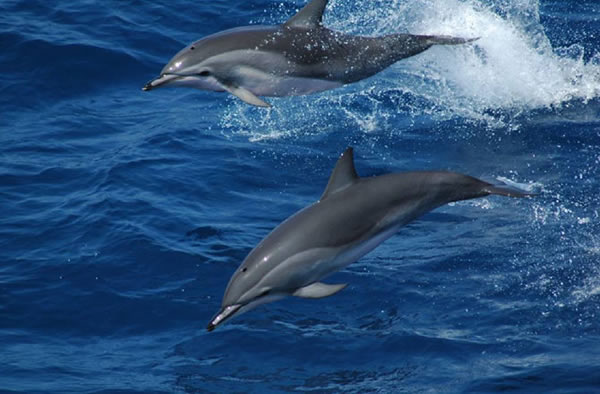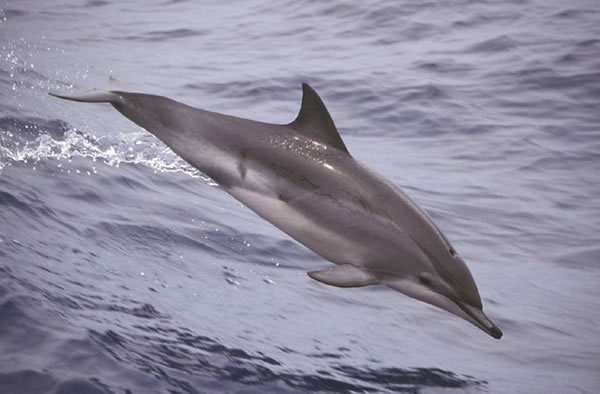Hybrid Dolphin: Neat Curiosity or Bad Omen?
Clymene dolphins are a hybrid of closely related spinner and striped dolphins.
The clymene's mitochondrial genome most resembles that of the striped dolphin while its nuclear genome is more closely related to that of the spinner dolphin.
The small and sleek clymene dolphin could be a barometer of how well ocean life is faring, given that the dolphin was recently determined to be the first known naturally occurring marine mammal hybrid.
Molecular analysis, outlined in a study in the latest issue of the journal PLoS ONE, found that clymene dolphins, which live in the Atlantic Ocean and can grow to about 7 feet long, are a cross between closely related spinner and striped dolphins.
"In most cases found in nature, each species favors its own kind when mating," co-author Ana Amaral of the University of Lisbon told Discovery News. "In order for these three dolphin species to keep their genetic diversity intact, they must, for the most part, be mating preferentially within their own species."
Nevertheless, something compelled the spinner and striped dolphins to mate outside of their own species, resulting in the clymene. This would be somewhat like a human choosing to mate with a chimp, and a love child emerging from that pairing representing an entirely new species.
Evidence suggests that a segment of our species did mate with Neanderthals, since Neanderthal DNA is within the genome of non-African humans, but that Neanderthals were simply absorbed into Homo sapiens.
The clymene, on the other hand, is now viewed as being distinct from striped and spinner dolphins.
Amaral and her colleagues explained that DNA analysis shows the clymene's mitochondrial genome most resembles that of the striped dolphin. Its nuclear genome, however, is more closely related to that of the spinner dolphin.
Striped and spinner dolphins don't even look the same, making the love match all the more surprising.
"Physically, they possess different coloration patterns and their skulls differ in their shape and size," Amaral said. "These differences, however, do not prevent the dolphins from mating and producing fertile hybrids."
Naturally occurring hybrids are not so rare among plants, fishes and birds. It's not because they are more amorous. It's just primarily due to the fact that genetic and embryonic development factors in mammals tend to prevent their hybrid offspring from being viable.
It appears that multiple spinner and striped dolphins have been mating with each other for years, enough to produce the new clymene population.
"It is not clear if diminishing populations led to these hybridization phenomena," Amaral said. "There also can be other contributing factors, such as the need to explore new habitat with new resources."
If human activities affected the dolphins' original habitat and food supply, then we could be partly responsible for the spinner-striped dolphin matings.
It is known that all of these dolphins are susceptible to incidental capture as bycatch in fishing nets. They are also directly hunted for either human consumption or shark bait. Pollution, habitat loss and climate change pose additional threats.
As it stands, it's unclear if the emergence of clymene dolphins signals good or bad news for ocean ecosystems.
"Very little is known about the clymene dolphin, whose scientific name translated from Greek is 'oceanid,' but ironically also can mean 'fame' or 'notoriety,'" Howard Rosenbaum, director of the Wildlife Conservation Society's Ocean Giants program said.
Further research may determine if the clymene will gain fame as a marine mammal novelty, or notoriety as further evidence that marine mammal populations are in jeopardy.(Jan 13, 2014 08:40 AM ET // by Jennifer Viegas)













